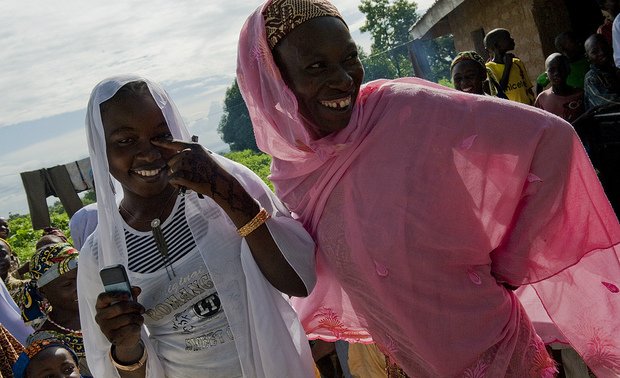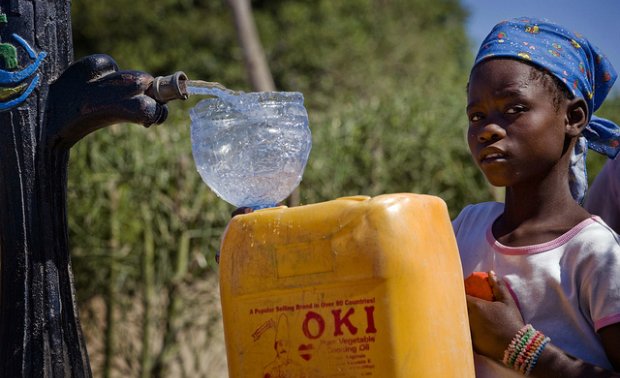I’ll be the first to admit that I don’t always “get” the women in my life quite like I do my male friends and relatives—just ask my girlfriend, who is probably convinced I was raised by a pack of wolves considering how oblivious I am half the time.
(In my defense, there are about a million articles out there attempting to decode what girls "really mean," so there's no way I'm alone in this.)
To be perfectly honest, you could probably say the same about my grasp on issues relating to girls and women in international development. This is a problem seeing as the theme of the month here at Global Citizen is supporting girls and women around the world.
In an effort to remedy my glaring cluelessness in time for Girls & Women Month, I consulted my more knowledgeable colleagues and combed the Web to put together this list of 9 key issues affecting girls and women worldwide. Whether you’re new to the topic or a veteran advocate, this cheat sheet should help clarify what we mean when we talk about something as broad as girls’ and women’s issues.
1. Access to Education

A 2013 report by UNESCO found that 31 million girls of primary school age were not in school, and about one out of every four young women in developing countries had never completed their primary school education. That number represents a huge pool of untapped girl power: that same report suggests that educated women are more likely to get married later, survive childbirth, raise healthy kids, find work, and earn more money, among other positives.
2. Employment Opportunities

Even in a country as wealthy and developed as the US, women still experience major inequality in the workforce: By some estimates, women earn only $0.77 for every $1 earned by men. Globally, the gender gap is even wider: women earn only one tenth of the world’s income despite working two thirds of the total work hours . Empowering women to earn their fair share could benefit their entire communities in a big way: women are likely to invest more of their money back into their families and communities than men typically do .
3. Reproductive Health & Rights

225 million women in developing countries have an unmet need for family planning, contributing to 74 million unplanned pregnancies and 36 million abortions every year, according to figures cited by Women Deliver, a women’s advocacy group . Helping women take charge of their baby-making reduces unsafe abortions and maternal deaths by over 70% each, and conserves precious resources that would otherwise have gone toward pregnancy-related costs.
4. Maternal Health

The World Health Organization estimates that 800 women die every day from preventable, pregnancy-related causes. That’s nearly 300,000 lives per year needlessly lost during what is fundamentally a life-creating event. What more is there to say?
5. Gender-based Violence

1 in 3 women experience physical or sexual violence in their lifetimes, according to WHO. Whether it’s domestic abuse, rape, or sexual trafficking, gender-based violence denies far too many women the opportunity to live happy, healthy, and fulfilling lives.
6. Child Marriage

An estimated 140 million girls will become child brides between 2011 and 2020 . Girls who marry before age 18 are typically denied an education, at risk of complications related to premature childbearing, and more vulnerable to intimate partner violence.
7. Female Genital Mutilation

Female Genital Mutilation (or FGM), defined by WHO as including “procedures that intentionally alter or cause injury to the female genital organs for non-medical reasons,” is a complex issue with religious and cultural implications for the groups who practice it. That said, the general consensus in the international community is that FGM imposes real health consequences, violates a child’s rights, and promotes inequality between the sexes.
8. Water & Sanitation

When clean drinking water and hygienic sanitation facilities are in short supply, women and girls suffer most. Case in point: Girls whose schools lack proper bathrooms will often skip school during their menstrual periods for fear of embarrassment or stigma. It’s also true that women in developing countries are frequently tasked with fetching water, which can be a time-consuming process. As my colleague Christina pointed out, the girls and women of the world have much better things to do with their time than shuttle buckets around.
9. Gender Equality

Equality (or the lack thereof) is a recurring issue when it comes to women and girls, whether it’s unequal access to schooling for girls in developing countries, or unequal pay for women in the workplace. In a world where 95% of countries are led by a male head of state, it’s clear that we as a global community have a long way to go before women are given a fair shake.
While the 9 issues outlined above are specific to girls and women, addressing them will positively impact everyone—even my fellow clueless men of the world. Stay tuned to Global Citizen all month as we explore the many ways in which a win for girls and women is a win for us all.
If you believe that girls and women everywhere deserve equal rights, and that those rights must be protected, click the "TAKE ACTION NOW" button below to show your support by signing a petition NOW.